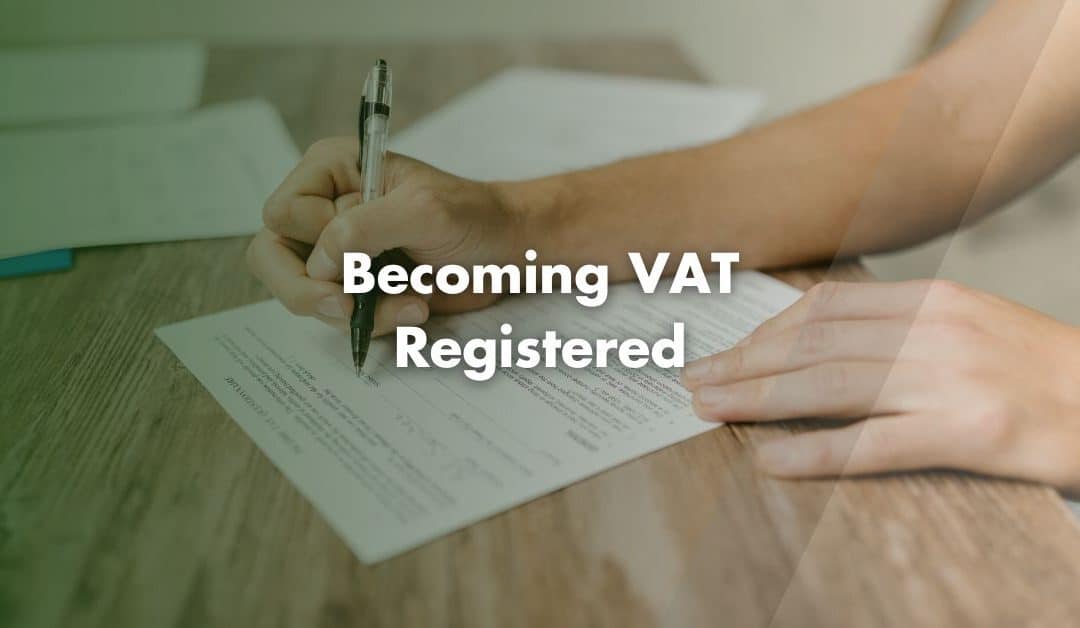If you run a business in the UK, you may need to become VAT registered at some point. You need to understand the VAT registration process to avoid penalties and make the most of potential benefits.
Who Needs to Become VAT Registered?
Businesses must register for VAT if their taxable turnover exceeds £90,000 in the past 12 months or they expect to do so in the next 30 days. Consequently, missing this deadline can result in a fine from HMRC.
If your turnover is below the threshold, you can still voluntarily register for VAT. Many businesses choose this option to reclaim VAT on business expenses and also presents a more professional image to customers and suppliers.
Benefits of Becoming VAT Registered
1. If your business makes VAT-taxable purchases, you can reclaim the VAT paid. This can be particularly useful when setting up a business and buying equipment, furniture or software.
2. Being VAT registered can make your business appear more established. Some clients and suppliers prefer working with VAT registered businesses as it signals a certain level of turnover.
3. As you will be filing VAT returns regularly, it keeps your financial records up to date, which is useful for managing cash flow and tax obligations.
How to Register for VAT
There are 2 main ways to register:
1. Online Registration (Recommended)
- Sign in or create a Government Gateway account
- Select “Get another tax, duty or scheme” and choose VAT
- Follow the prompts and submit your details
2. Paper Registration Using VAT1 Form
- Some businesses, such as those applying for VAT exemptions or registering multiple units, must use a VAT1 form.
- They must then be send the VAT1 to HMRC by post.
Before starting your registration, you will need the following details:
- Business name and contact details
- Bank account details
- Unique Taxpayer Reference (UTR)
- Estimated turnover and business activities
Once registered, you will receive a VAT certificate with your VAT number and first return due date. This can take up to 30 days.
VAT Schemes to Consider
1. Standard VAT Scheme
- Businesses pay VAT based on invoice dates, not payment dates
- Can create cash flow issues if payments from customers are delayed
2. Cash Accounting Scheme
- Businesses only pay VAT when they settle their invoices
- Ideal for businesses with cash flow concerns
3. Flat Rate Scheme
- Businesses pay a fixed percentage of turnover as VAT
- Simplifies VAT returns but limits reclaiming VAT on purchases
4. Annual Accounting Scheme
- Businesses make advance VAT payments and submit one return per year
- Helps with budgeting and cash flow management
Late Registration and Penalties
If you fail to register on time, you must pay VAT from the date you should have registered. Additionally, HMRC may impose penalties depending on how much VAT the business owes and how late the registration is.
If your turnover exceeds the threshold temporarily, you can apply for a Registration Exception, but you must provide evidence that turnover will remain below £88,000 in the next 12 months.
After Becoming VAT Registered
Once registered:
- You must charge VAT on sales and include your VAT number on invoices
- You must submit VAT returns to HMRC, usually every quarter
- You must keep records of all VAT-related transactions
Until you receive your VAT number, you cannot charge VAT on invoices. However, you can increase prices to cover the VAT you will owe.
Updating VAT Details
Businesses must update their VAT registration details within 30 days if they change:
- The business name or address
- Their accountant or agent
- Membership partners
Failing to update details on time can lead to penalties.
Contact Us
We are not just accountants; we are Chartered Accountants with one of the most reputable and premium accounting bodies. We are registered and regulated by ACCA; so you can rest assured that you are in good hands. Knowing this, don’t hesitate to get in touch with us if you require assistance: Pi Accountancy | Contact Us
This article is for general informational purposes only and does not constitute legal or financial advice. While we aim to keep our content up to date and accurate, UK tax laws and regulations are subject to change. Please speak to an accountant or tax professional for advice tailored to your individual circumstances. Pi Accountancy accepts no responsibility for any issues arising from reliance on the information provided.

